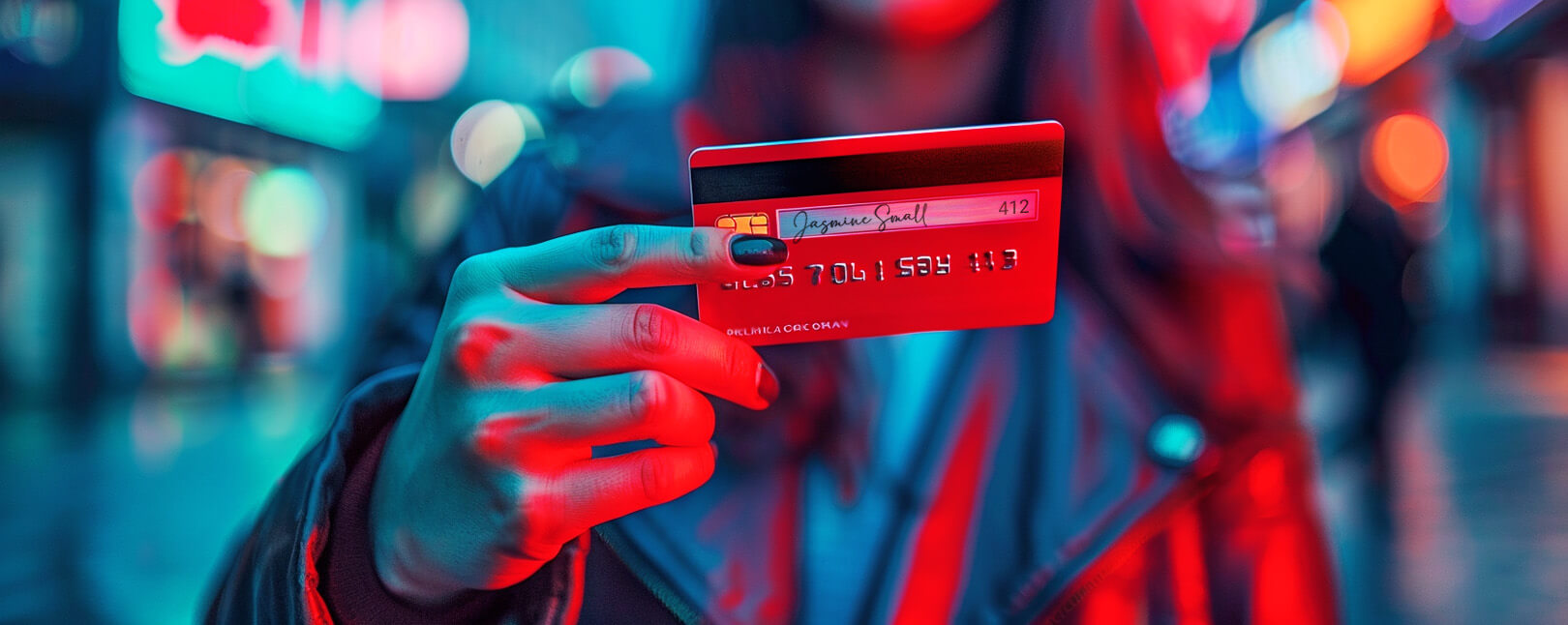How Card Security Codes Work & Why They’re Essential for Dynamic, Multilayered Fraud Detection
You know that little numeric code on the back of your credit or debit card?
That number is called a “card security code,” or CSC. It’s a safety feature designed to boost shoppers’ security while protecting merchants from fraud and chargebacks.
Verifying the CSC is a basic check against credit and debit card fraud. Most merchants already make it a policy to request the customer's security code for all card-not-present transactions. Some still skip this vital security check, though.
Let's have a look at how these codes work. And, even more importantly, the situations where they might not work.
Recommended reading
- What is Mastercard SecureCode? Here’s How it Works
- The Top 10 Fraud Detection Tools You Need to Have in 2025
- ECI Indicators: How to Understand 3DS Response Codes
- How to Detect Fraud: Top 20 Tips to Stop eCommerce Scams
- Reverse Email Lookup: Tips, Tools & How to Detect Fraud
- Top 20 Fraud Red Flags All Merchants Should Know in 2025
What is a Card Security Code?
- Card Security Code
A debit or credit card security code (sometimes known as card verification value) is a 3- or 4-digit number that helps authenticate transactions in which there is no physical card present, as in an online order. It was designed to help sellers verify that the authorized cardholder participates in a purchase, even if they can't physically see the card or the cardholder.
[noun]/kärd • sǝ • kyoo • rǝ • dē • kōd/
A card security code (CSC) is a crucial security feature for credit and debit card transactions. It’s designed to enhance security and prevent fraudulent activity.
The importance of the CSC lies in its role in card-not-present transactions, such as online or over-the-phone purchases. Merchants ask for the CSC to verify the authenticity of the card being used. The CSC adds an extra layer of security, reducing the likelihood of fraudulent transactions and providing greater peace of mind to both consumers and merchants.
By requiring this additional piece of information, merchants can ensure that the person attempting the transaction has physical possession of the card. So, by requesting the card security code makes it harder for fraudsters to use stolen card numbers for unauthorized transactions without having the actual card in hand.
Where Do I Find My Card Security Code?
Card security codes vary according to the network branded on the card. Each network has its own name for this security feature and may place the code in a different spot on the card.
For Visa, Mastercard, and Discover cards, this code is typically a three-digit number located on the back of the card, in the signature strip. On American Express cards, the CSC is a four-digit number found on the front, just above the card number.
Card security codes vary according to the network branded on the card. Each network has its own name for this security feature and may place the code in a different spot on the card.
For Visa, Mastercard, and Discover cards, this code is typically a three-digit number located on the back of the card, in the signature strip. On American Express cards, the CSC is a four-digit number found on the front, just above the card number.
| Card Brand | CSC is called… | Number of digits | Location |
| Visa | Card Verification Value 2 (CVV2) | 3 | On the back of the card, just to the right of the signature box |
| Mastercard | Card Validation Code 2 (CVC2) | 3 | On the back of the card, just to the right of the signature box |
| Discover | Card Security Code (CSC) | 3 | On the back of the card, just to the right of the signature box |
| American Express | Card Identification Number (CID) | 4 | On the front of the card, to the right of the card number. |
Another option is to employ a dynamic security code, with technology built into the card that changes the security code regularly (i.e., hourly). These have not yet seen widespread adoption, though.
How Do Card Security Codes Work?
When a cardholder enters the CSC during a transaction, the code is transmitted to the card issuer along with other relevant transaction data. The card issuer's system then checks the CSC data against their records. If the correct code is entered, the transaction proceeds. If there’s a mismatch, though, the transaction is declined.
This process relies on secure, encrypted communication channels to ensure that the information remains confidential during transmission. Although they get transmitted along with other transaction data, the merchant does not keep a copy of the CSC on file. So, even in a data breach, criminals would not get a copy of this number.
A PIN is a multi-digit number used in conjunction with a physical card for in-person transactions, such as withdrawing cash from an ATM or making a purchase using a chip-and-PIN terminal. The PIN is entered into a secure keypad and acts as an extra layer of authentication to ensure that the cardholder is indeed the person using the card. While the CVV helps protect against online fraud, the PIN guards against in-person fraudulent activities.
One commonly used method is transport layer security (TLS), which encrypts the data between the cardholder's device and the card issuer's servers. TLS creates a secure tunnel where data is scrambled and only readable by the recipient and sender. This ensures that the information remains confidential and intact as it travels across the internet.
Furthermore, modern encryption algorithms, such as advanced encryption standard (AES), are employed to secure the data, both while at rest and in transit. These algorithms use complex mathematical keys to encode and decode the data, making it virtually impossible for unauthorized parties to access or alter the information without the proper decryption key.
The technology behind card security codes also includes measures to protect against potential compromises. For instance, the length and complexity of the CSC are designed to make guessing difficult, even if the card number is known.
Should You Ever Share Your Card Security Code?
There are some instances where it’s okay to share a card security code. For example, when making an online purchase via a secured page or website, it is usually safe to share that information with the merchant. That’s assuming the merchant is compliant with security standards, as signified by their display of the Secure Sockets Layer (SSL) certificate badge.

It’s also safe to share one’s CSC when making a purchase with a trusted merchant directly over the phone. The merchant won’t save the information; it’s only being used to verify the buyer’s identity and will be discarded afterward.
On the other hand, fraudsters are pretty skilled at impersonating trusted parties. One may contact a cardholder, pretending to be a legitimate merchant or a representative from the bank or the card network. Phishing attacks also pose the risk of fraudsters creating dummy eCommerce sites that trick people into entering their information.

Cardholders should always try to verify who they’re speaking to or ordering from. They should never provide a card security code to someone who can’t identify themself or who operates from an unsecured website.
Sharing a CSC on a person-to-person basis is never a good idea, either. Even if it’s with a trusted party, like a friend or family member, this can lead to issues like family fraud.
Limitations of Card Security Codes
Despite their effectiveness, card security codes still have limitations. This is particularly true when it comes to protecting merchants. While requiring the CSC code for every card-not-present transaction is a good practice, it cannot eliminate the risk posed by fraud and the resulting chargebacks.
There are several situations in which a buyer can enter a credit card security code correctly, but the transaction still leads to a chargeback:
For merchants, requesting the buyer’s credit card security code at checkout will almost certainly lower the overall number of chargebacks filed by cardholder due to criminal fraud. However, merchants can’t rely on this fraud protection mechanism as their sole chargeback defense.
Innovations in Card Security Code Technology: CVV2 vs. CVV3
It’s true that card security codes are not infallible. However, the technology is still capable of changing and adapting to the times. Recently-developed CVV3 technology, for example, represents a significant advancement over the traditional CVV2 security measures.
CVV2 codes are static three-digit numbers printed on the back of credit cards. CVV3, however, uses a dynamic code that changes with every transaction. This dynamic nature makes it far more difficult for fraudsters to use stolen card information, because any CVV3 code intercepted by scammers would be obsolete within a matter of minutes.
In simple terms, CVV3 technology creates a unique, one-time-use code for each transaction, significantly reducing the risk of unauthorized purchases and chargebacks. This is achieved through sophisticated algorithms and real-time data synchronization between the card issuer and the payment processor. When a cardholder initiates a transaction, the algorithm generates a new CVV3 code, which is then verified by the payment system.
Another phenomenon that could help accelerate adoption of next-gen card security codes like CVV3 is the onset of mobile wallet technology. Virtual wallet software and apps, like Apple Pay, were designed to capitalize on preexisting EMV principles. They incorporate biometric and GPS data to verify users in real-time. These apps could easily incorporate dynamic security codes into the checkout process.
Card Security Code Best Practices for Cardholders
As a credit or debit card user, it’s really up to you to keep your card security code secure. Not to worry, though; we have some personal security tips to help ensure your personal data stays safe:
- Do Not Share Your Card Information: Avoid sharing your credit card details with anyone, even friends and family. Only enter your card information on secure, trusted websites.
- Regularly Monitor Statements: Frequently check your credit card statements and online account for any unauthorized transactions. Report any suspicious activity immediately.
- Use Strong Passwords: Create complex passwords for online banking and shopping sites. Avoid using easily guessable information such as birthdays or pet names.
- Enable Two-Factor Authentication (2FA): Activate 2FA on your online accounts to add an extra layer of security. This typically involves receiving a code on your phone that you must enter along with your password.
- Keep Your Software Updated: Ensure that your devices and any apps used for banking or shopping are updated to the latest versions. Updates often include security patches.
- Be Wary of Phishing Scams: Do not click on links or download attachments from unknown email senders. Verify the source before providing any personal information.
- Use Mobile Wallets: Consider using mobile wallet apps, which use dynamic security codes and biometric verification for added security.
- Secure Your Devices: Use a screen lock on your smartphone and computer. In case these devices are lost or stolen, your information will remain protected.
- Notify Your Bank of Suspicious Activity: If you suspect that your credit card information has been compromised, contact your card issuer immediately to block the card and prevent further fraudulent transactions.
Card Security Code Best Practices for Merchants
New technologies will eventually render static card security codes obsolete. In the meantime, though, CSCs should remain a vital tool in every merchant’s eCommerce fraud prevention arsenal.
So, as a well-meaning merchant, how do you bolster customer confidence in your fraud prevention efforts while maintaining a palatable shopping experience? Here are a few best practices that can ensure that cardholders feel comfortable sharing their card data without feeling hassled by the added security:
Cardholders should also take card security codes seriously. For instance, merchants that don’t require the code may be less secure than others, so buyers should be more wary of these sellers.
Card security codes are an important criminal fraud protection mechanism, as well as part of a larger, multi-tiered chargeback management strategy.
A policy of requesting credit card security codes for card-not-present transactions is a significant step towards detecting and preventing fraud. Of course, this should still be combined with other fraud prevention techniques, as well as a consistent chargeback representment plan to maximize your efforts.
If you’d like to take your chargeback defense to the next level, we can help. Talk to us about a custom ROI analysis.
FAQs
What is the 3 digit security code on my card?
The three-digit security code on your card, often referred to as the card security code, or “CSC,” can be found on the back of your credit or debit card (or card front, for American Express cards). This code is a security feature designed to protect you against fraud by ensuring that the person making the transaction has physical possession of the card.
What card has a 4 digit security code?
American Express cards have a four-digit security code, which can be found on the front of the card. This unique identifier helps provide an extra layer of security for card-not-present transactions.
Why is my CSC only 3 numbers?
The CSC, or card security code, is typically three digits on most credit cards because it strikes a balance between security and usability. This format is used by Visa, Mastercard, and Discover to simplify the verification process while still providing robust protection against fraudulent transactions.
What is the difference between CVV and CVC?
CVV (Card Verification Value) and CVC (Card Verification Code) both refer to the security codes found on payment cards, but they are terms used by different card networks. CVV is typically used by Visa, while CVC is used by MasterCard; despite the different names, both serve the same purpose of enhancing security for card-not-present transactions.
What happens if a CSC is wrong?
If the CSC is entered incorrectly, the transaction will usually be declined by the card issuer to prevent potential fraud. You may need to double-check the CSC and other card details before attempting the transaction again.
Can a payment go through without CSC?
In most cases, payment will not go through without entering the correct CSC , as this security measure is mandatory for verifying the transaction. However, some merchants may allow transactions without the CSC, but this practice significantly increases the risk of fraud.














